The Surprising Reasons Dolphins Are Dangerous to Humans — and Why You Should Never Swim With Them
Dolphins are carnivores and predators to various ocean animals.
Published July 10 2024, 9:35 a.m. ET
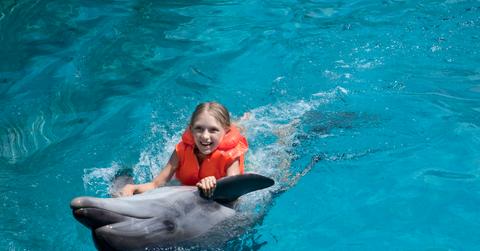
We know that the ongoing climate crisis is making life dangerous for marine life — but how exactly do interactions between humans and marine mammals like dolphins fit into this?
Have we reached a troubling crescendo wherein humans are endangering both themselves and marine animals when they go swimming with dolphins?
Let's delve into why dolphin encounters are dangerous for humans and dolphins alike, as well as why these forced interactions between humans and dolphins in captivity are extraordinarily unethical.
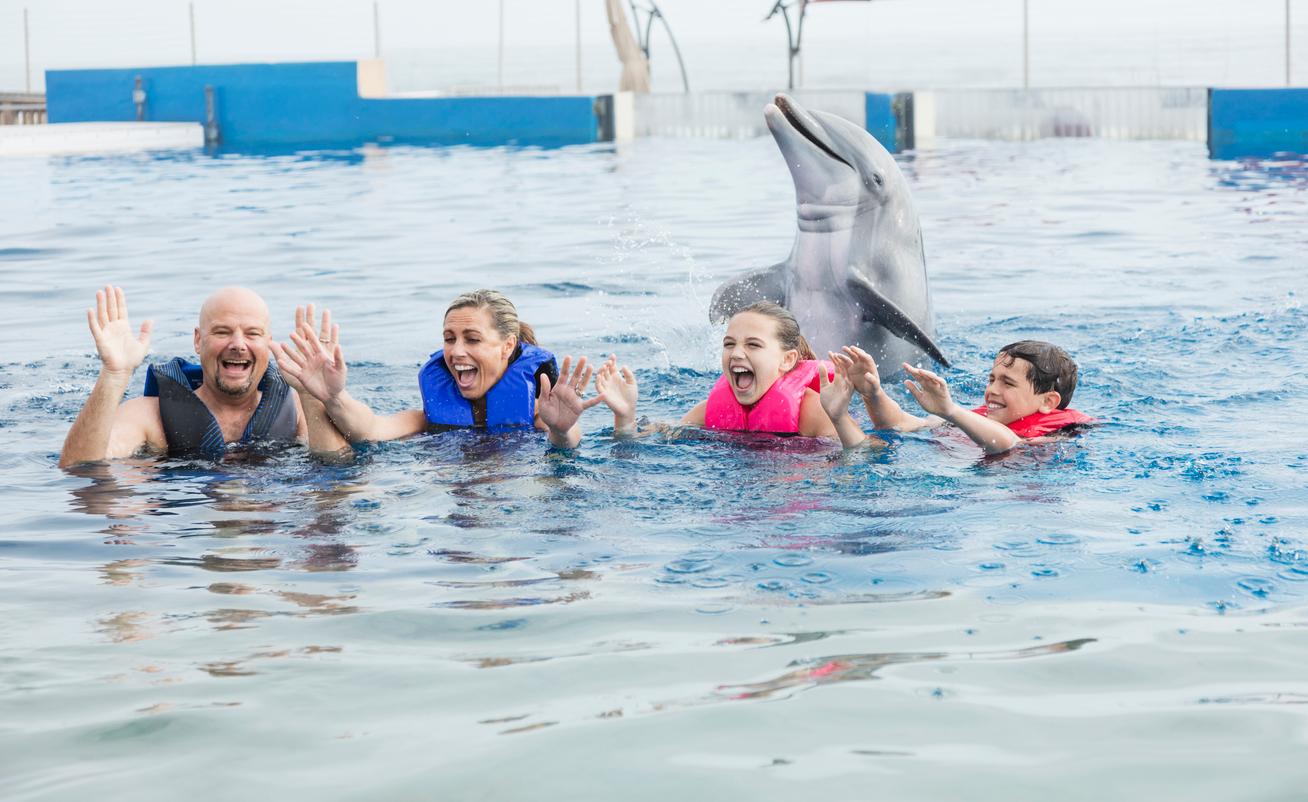
Are dolphins dangerous to humans? Dolphin encounters can be unsafe.
Yes, dolphins can be dangerous to humans, and interactions with them should be avoided.
Dolphins are carnivores and predators to various ocean animals, such as octopus, fish, and squid. Fortunately, dolphins are not known to eat people — though on rare occasions, dolphins have shown aggression towards and attacked people. And dolphin encounters really aren't worth that risk.
Dolphins used for entertainment and encounters are are held in captivity, and forced to perform unnatural behaviors like "waving" to tourists. "Dolphins living in captivity are suffering silently for the sake of entertainment," according to World Animal Protection.
Also, similar to the slow loris, sugar glider, and other mishandled animals, that isn't a happy smile on the dolphin's face — per World Animal Protection, the permanent smile is due to their anatomy: "The truth is dolphins smile even when they’re dead."
Read on for a few reasons why dolphin encounters can be dangerous.
Dolphins are undomesticated apex predators.
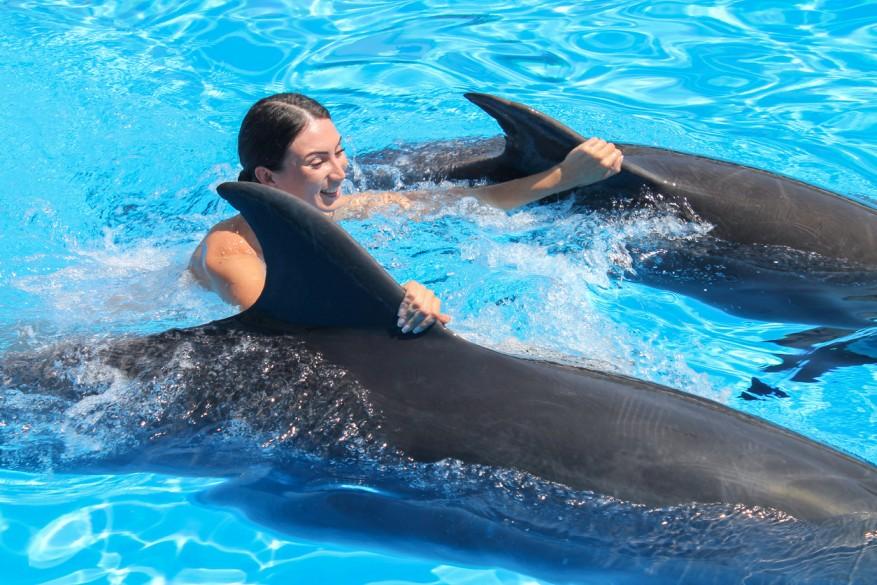
Swimming with dolphins is neither safe for the dolphins nor for families on vacation seeking a once-in-a-lifetime experience. Even at places marketed as "marine education centers," dolphins are forced to swim with countless humans daily.
As World Animal Protection explains, dolphins are apex predators with the capacity to kill a shark, and despite being force-bred and raised in captivity, dolphins are not domesticated animals.
Swimming with dolphins may cause irreparable damage to their bodies.
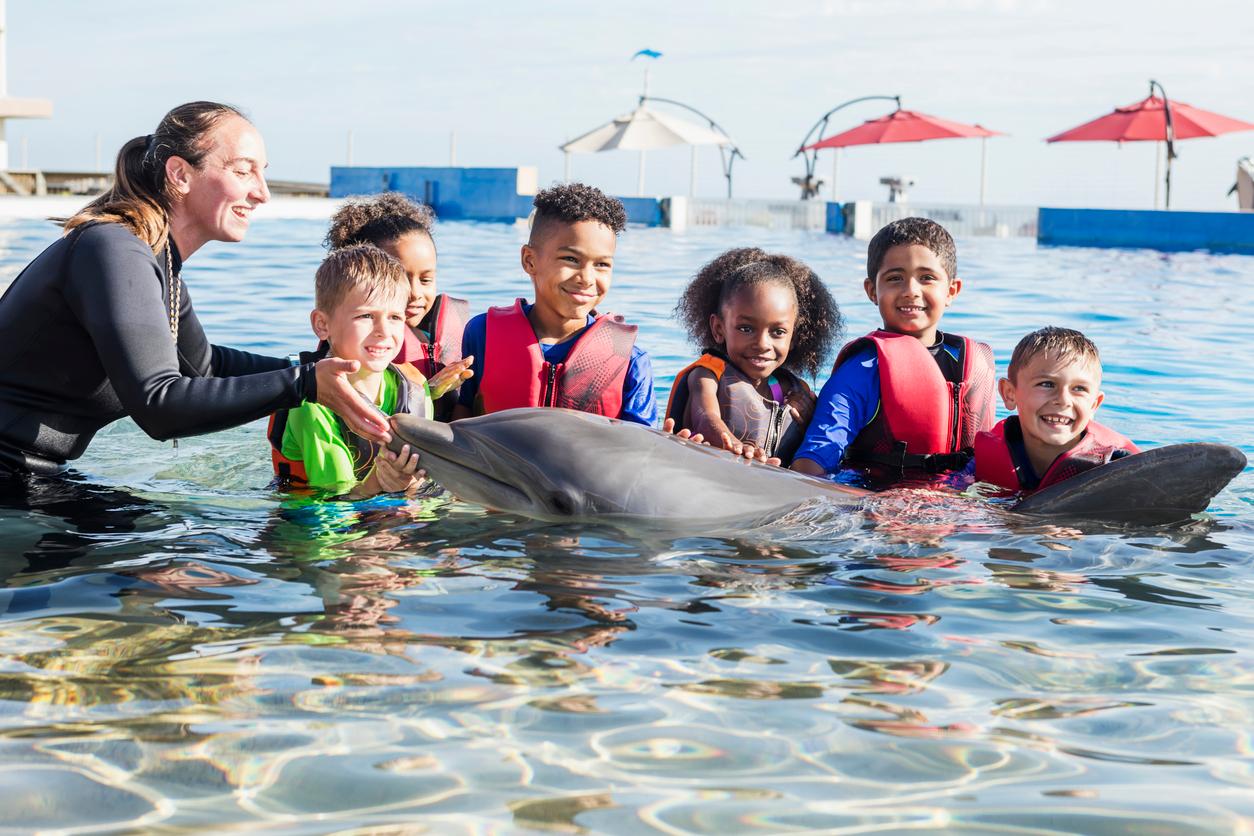
As the nonprofit Ric O'Barry's Dolphin Project explains, the area where dolphins are held captive to allow humans to swim with them (sometimes referred to as "dolphin tanks" or "ocean pens") is extremely chlorinated and may contain other chemicals that damage the dolphin's skin and eyes.
Additionally, with the sun constantly blaring down upon the dolphins with no escape, no place to rest, and the constant need to perform for humans, exhaustion ensues and further damage to their eyes occurs.
Dolphins become stressed and agitated when swimming with humans.
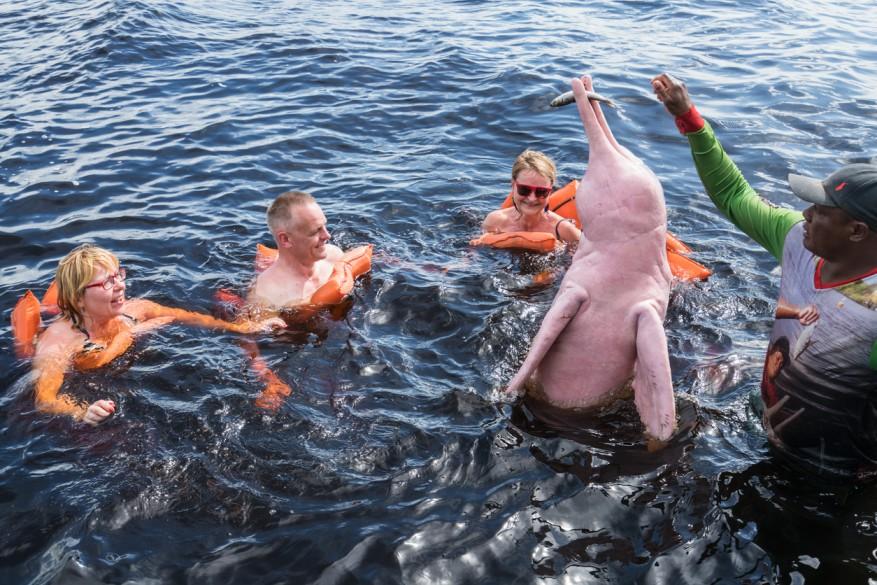
According to The Gallery, dolphins understandably experience stress when swimming with humans, due in part to the abnormal and forced nature of these interactions. This stress may awaken aggression in the dolphin, who is capable of inflicting fatal damage to humans and other marine life alike.
Many photos depicting dolphins interacting with humans are with crowds surrounding them. If the dolphin feels threatened, their behavior may become aggressive.
Swimming with dolphins traps them in a sea of harmful bacteria.
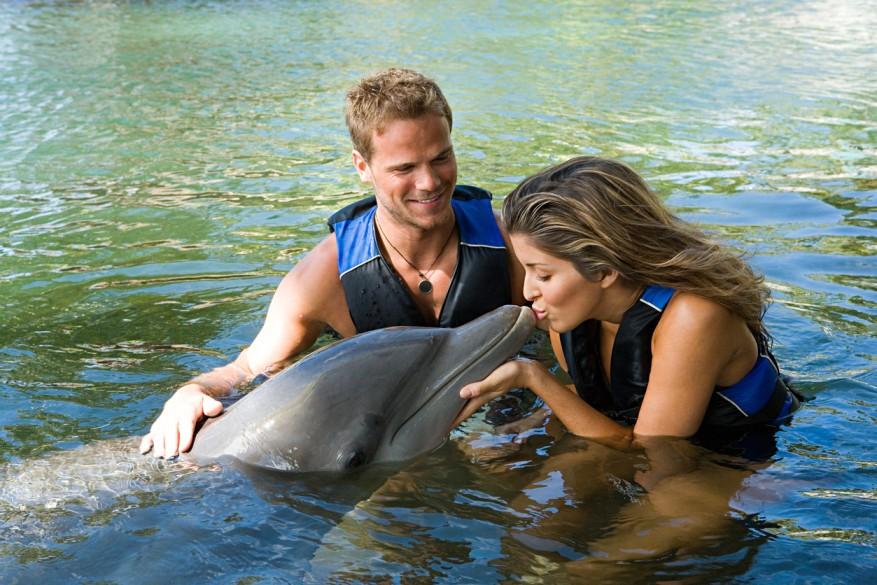
While the chlorine in dolphin tanks protects humans from various sources of bacteria, dolphins are constantly exposed to contaminants unnatural to their living space, including potentially harmful sunscreen chemicals from families throughout each day.
"Our volunteers in Mexico have witnessed oil and/or gasoline slicks coating the surface of the water in dolphin pens. The dolphins have no choice but to swim in, and ingest that pollution," according to Ric O'Barry's Dolphin Project.
If that weren't enough, the nonprofit also discovered unnatural causes of death among dolphins forced to swim for entertainment, including choking on an item that had fallen into the enclosure.
Ric O'Barry's Dolphin Project wrote: "According to government records, dolphins in Mexico have died from septic shock, pneumonia, fungal infection, drowning, organ failure, cancer, suffocation, heart attacks, chronic stress, blunt force trauma, ruptured bladder, and antibiotic toxicity."